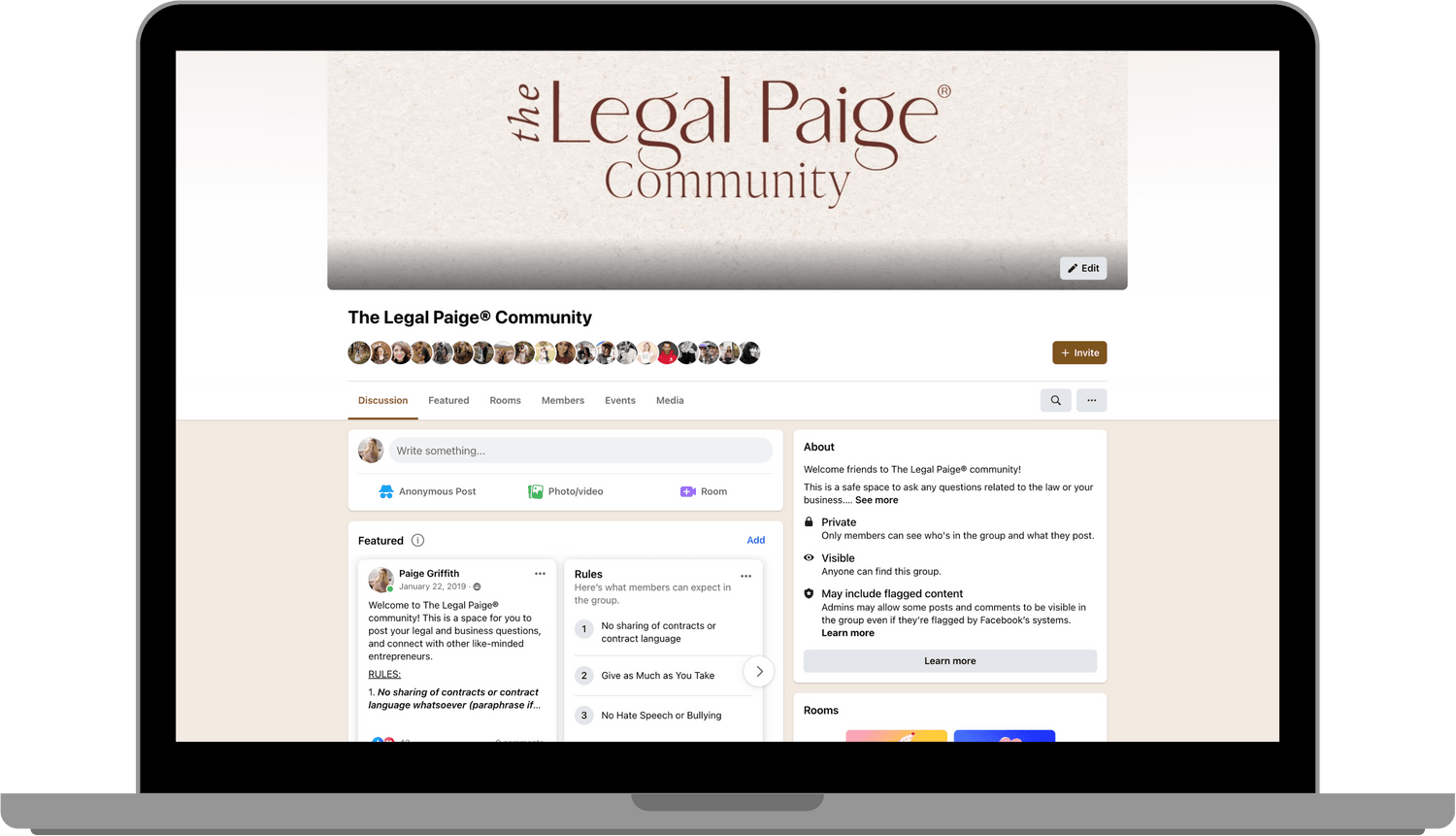
Intellectual Property Use Issues To Avoid As Photographers
If you’re a photographer you’ve probably seen some news articles about a photographer or other small business owner who got into trouble by using a trademarked phrase, slogan, copyrighted image, or other piece of intellectual property that belonged to someone else. The biggest and probably most famous of these issues is the photographer who was advertising holiday mini sessions using “The Grinch” trademark and costume.

So when can you use trademarked items or phrases and what are the restrictions using various intellectual property in your photographs or mini sessions? Do you need a license in order to use them or is there some kind of fair use? That answer is going to ultimately depend on the circumstances, but in this blog post I’m going over what various types of intellectual property are and how you can make sure you are not infringing on another's rights in your own sessions.
What is a Trademark?
A trademark can be any word, phrase, symbol, design, or a combination of these things that identifies your goods or services. Examples of trademarked items are words such as “Nike” or the McDonald’s famous arches. These are words or phrases that customers easily recognize your company in the marketplace and distinguish you from your competitors. In order to have a trademark you have to go through a rigorous application process through the U.S. Patent and Trademark Office. This process usually requires an attorney and can take several months or years to actually complete. For more information on trademarks visit the U.S. Patent and Trademark Office’s official website.
What is Copyright?
Copyright is U.S. Federal law that protects artwork and original creations that have been fixed in a tangible medium. For copyright protection to attach the work has to be “an original work of authorship”, meaning the work has to be an independently created work of art and possess some level of individual creativity. Photography counts as a copyrighted work the minute you compose the shot in your camera and click the shutter for it to go onto your memory card (that makes it “fixed” in the tangible medium)!
What are Big IP Issues to Avoid as Photographers?
An intellectual property legal issue often arises when a photographer creates a session or mini session with a theme involving some type of trademarked term or uses a copyrighted item as a prop. An example of this are those cute family holiday photos with someone dressed up as The Grinch. This is an issue of copyright AND trademark protections. First, “The Grinch” is actually a phrase trademarked by Dr. Seuss Enterprises and when a photographer uses the name “The Grinch” in advertising and promotion for their mini sessions, this is in violation of the registered trademark because the photographer did not receive permission from the trademark owner to do so. Dr. Seuss Enterprises argued in this action that there was a likelihood of confusion as to whether the trademarked item is connected to the photographer as opposed to Dr. Suess Enterprises as the actual trademark owner. The company had the legal right to stop all use of work associated with it, causing photographers to stop using the phrase in marketing/advertising all together.
Additionally, using the character “The Grinch” itself, which has distinct attributes (green fur, specific facial features and voice/mannerisms), is a violation of Dr. Seuss Enterprises' copyright and trade dress of the character they created.
That’s why companies (like Disney for example) will actually hire their own exclusive photographers to feature their products (toys, characters, businesses, logos) that are trademarked as a way to control how the products are photographed and used. Companies will work with the photographer and give them specific rights (often licenses) regarding use of the photographs.
One other way photographers have gotten into hot water is by photographing in front of a copyrighted work such as a mural or large billboard (see an example of this here). In most cases, you are safe as a photographer and are not “prevent[ed] [in] the making, distributing, or public display of pictures, paintings, photographs, or other pictorial representations of the work, if the building in which the work is embodied is located in or ordinarily visible from a public place.” But, it can get tricky because if the murals or photos are so intimately integrated into the buildings on which they are displayed and have essentially become design elements of the architectural works themselves, you could be infringing on copyright ownership. Thus, make sure you are careful in urban settings to avoid IP issues like this within your photographs and try to avoid taking photos with these in the background if possible.
When Can You Legally use Intellectual Property in a Photo?
When you are using something in your marketing, advertising, or your photos that you think may be trademarked or copyrighted you need to consider if you should be getting approval for use. Are you featuring a character, name, or likeness that you didn’t yourself create? Is there some fame attached to the subject? If the answer is yes, you’re likely using something that you’re going to need permission in order to use it for your own business.
To get permission to use intellectual property you need to contact the owner of the copyright or trademark. Some companies will sell limited licenses for certain types of use or periods of time, such as a one year license to use a character in specific family photos. You can search for the owner of a trademark on the U.S. Patent and Trademark Office’s website here. You can also find the owner of copyright through the public search function on the Copyright Office’s website here. Make SURE if you do get permission to use the intellectual property of another that it’s documented in a written and signed format, specifying the amount of use and time period you are given (in addition to what compensation you may be paying the owner of the IP for the license)!
What is a Trademark?
A trademark can be any word, phrase, symbol, design, or a combination of these things that identifies your goods or services. Examples of trademarked items are words such as “Nike” or the McDonald’s famous arches. These are words or phrases that customers easily recognize your company in the marketplace and distinguish you from your competitors. In order to have a trademark you have to go through a rigorous application process through the U.S. Patent and Trademark Office. This process usually requires an attorney and can take several months or years to actually complete. For more information on trademarks visit the U.S. Patent and Trademark Office’s official website.
What is Copyright?
Copyright is U.S. Federal law that protects artwork and original creations that have been fixed in a tangible medium. For copyright protection to attach the work has to be “an original work of authorship”, meaning the work has to be an independently created work of art and possess some level of individual creativity. Photography counts as a copyrighted work the minute you compose the shot in your camera and click the shutter for it to go onto your memory card (that makes it “fixed” in the tangible medium)!
What are Big IP Issues to Avoid as Photographers?
An intellectual property legal issue often arises when a photographer creates a session or mini session with a theme involving some type of trademarked term or uses a copyrighted item as a prop. An example of this are those cute family holiday photos with someone dressed up as The Grinch. This is an issue of copyright AND trademark protections. First, “The Grinch” is actually a phrase trademarked by Dr. Seuss Enterprises and when a photographer uses the name “The Grinch” in advertising and promotion for their mini sessions, this is in violation of the registered trademark because the photographer did not receive permission from the trademark owner to do so. Dr. Seuss Enterprises argued in this action that there was a likelihood of confusion as to whether the trademarked item is connected to the photographer as opposed to Dr. Seuss Enterprises as the actual trademark owner. The company had the legal right to stop all use of work associated with it, causing photographers to stop using the phrase in marketing/advertising all together.
Additionally, using the character “The Grinch” itself, which has distinct attributes (green fur, specific facial features and voice/mannerisms), is a violation of Dr. Seuss Enterprises' copyright and trade dress of the character they created.
That’s why companies (like Disney for example) will actually hire their own exclusive photographers to feature their products (toys, characters, businesses, logos) that are trademarked as a way to control how the products are photographed and used. Companies will work with the photographer and give them specific rights (often licenses) regarding use of the photographs.
One other way photographers have gotten into hot water is by photographing in front of a copyrighted work such as a mural or large billboard (see an example of this here). In most cases, you are safe as a photographer and are not “prevent[ed] [in] the making, distributing, or public display of pictures, paintings, photographs, or other pictorial representations of the work, if the building in which the work is embodied is located in or ordinarily visible from a public place.” But, it can get tricky because if the murals or photos are so intimately integrated into the buildings on which they are displayed and have essentially become design elements of the architectural works themselves, you could be infringing on copyright ownership. Thus, make sure you are careful in urban settings to avoid IP issues like this within your photographs and try to avoid taking photos with these in the background if possible.
When Can You Legally use Intellectual Property in a Photo?
When you are using something in your marketing, advertising, or your photos that you think may be trademarked or copyrighted you need to consider if you should be getting approval for use. Are you featuring a character, name, or likeness that you didn’t yourself create? Is there some fame attached to the subject? If the answer is yes, you’re likely using something that you’re going to need permission in order to use it for your own business.
To get permission to use intellectual property you need to contact the owner of the copyright or trademark. Some companies will sell limited licenses for certain types of use or periods of time, such as a one year license to use a character in specific family photos. You can search for the owner of a trademark on the U.S. Patent and Trademark Office’s website here. You can also find the owner of copyright through the public search function on the Copyright Office’s website here. Make SURE if you do get permission to use the intellectual property of another that it’s documented in a written and signed format, specifying the amount of use and time period you are given (in addition to what compensation you may be paying the owner of the IP for the license)!
THIS BLOG POST IS NOT A SUBSTITUTE FOR LEGAL ADVICE. EVERY SITUATION IS DIFFERENT & IS FACT-SPECIFIC. A proper legal analysis is necessary based on your location and contract. Consult an attorney in your home state for advice regarding your contract or specific legal situation.

Join the Community
Be a part of 8000+ TLP Community Members in this safe space and get real-time answers from Paige and her legal team daily!

Leave a comment